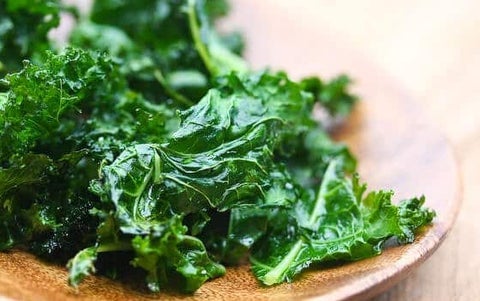Kale Nutrition
Is kale a superfood? Put simply, yes – it’s among the most nutrient-dense foods on the planet. There are many, many health benefits to eating kale regularly, so much so that it’s been dubbed a “nutritional superstar” and become ubiquitous at farmer’s markets and grocery stores over the last six years or so. Not bad for something that used to be grown just to feed livestock.
Kale, also known as leaf cabbage, belongs to the cabbage family Brassica oleracea and is grown for its edible green or deep purple leaves (the plant does not form a central head, unlike other types of cabbage). First cultivated around 2000 BC in the eastern Mediterranean and Asia, it was very much considered a peasant food and often used simply to feed cattle and pigs. Easy to grow and inexpensive, it became a staple food in places like Russia, Poland, and other eastern European countries; during WWII, its cultivation in the UK provided important nutrients missing from diets due to rationing.
First introduced to the Americas by famed botanist David Fairchild, kale was primarily used in the US for decorative purposes; it was also useful for desalinating soil. Famously, Thomas Jefferson grew it at Monticello. But from the 1990s onwards, its nutritional value saw kale emerge as a popular and fashionable vegetable – magazines ran features titled “How Kale Became Cool”, and Beyoncé wore a sweatshirt emblazoned with “kale” in her 7/11 music video. The kale-ification of the world was complete.

The curly green is loaded with powerful antioxidants like quercetin and kaempferol, as well as various polyphenols. These help counteract oxidative damage by free radicals in the body, which hasten the effects of ageing and even some cancers. These compounds also help lower blood-pressure, protect the heart, and are anti-inflammatory; they’ve even been found to help combat depression.
Kale is rich in substances called bile acid sequestrants, which makes it effective at lowering cholesterol – it’s actually nearly half as potent as cholestyramine, a popular cholesterol-lowering drug. High in fibre too, it’s beneficial in general for digestive health – it helps prevent constipation and maintains the digestive tract and intestines – and has several properties that make it an excellent weight-loss food. Low in calories but with a high water content, kale has a low energy density, meaning it helps you feel full for longer.
But it’s mineral and vitamins where kale really shines. It’s one of the best sources of vitamin K – a single cup of raw kale (about 67 grams/2.4 ounces) provides a whopping 684% of the recommended % Daily Value (DV), along with 206% of vitamin A and 134% of vitamin C. It’s also rich in manganese (26% DV), calcium (15% DV), vitamin B6 (15% DV), and has 3 grams of protein. And all this in only 33 calories.
Kale is a hardy plant, and thrives in wintertime – it can survive temperatures up to -15 degrees Celsius. It even becomes somewhat sweeter after a heavy frost. It holds its texture well in cooking, and can be prepared any number of ways; steamed, stir fried, roasted, pan fried, or eaten raw. You can turn it into smoothies, kale chips, wilt it into soup, mash it with potatoes, add it to stews and one pots, or turn it into a super healthy pesto. We carry a number of kale products, and always endeavour to have fresh, USDA certified organic kale available. Add some to your cart today, and see for yourself the health benefits of this superfood.

